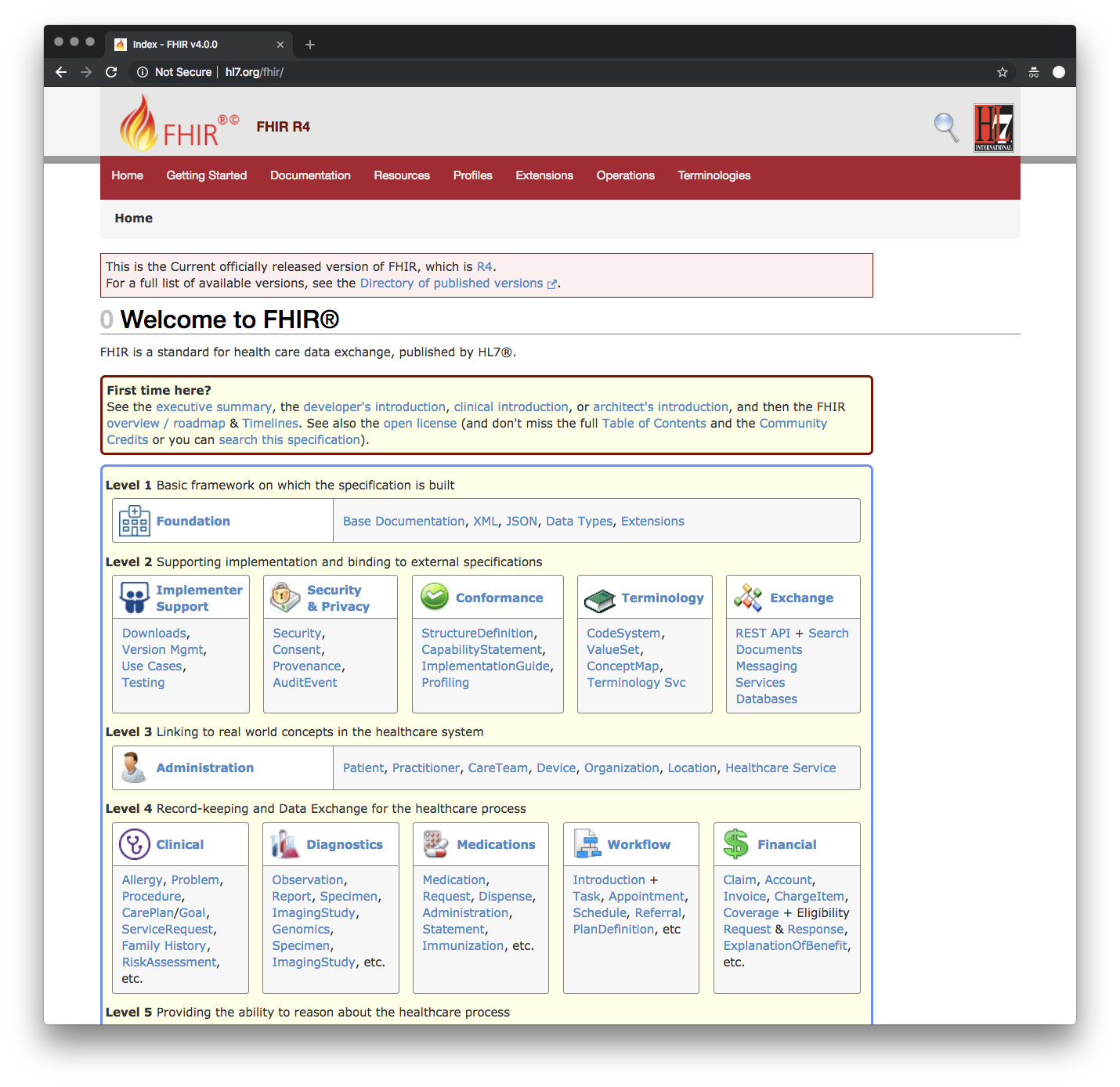Interoperability Standards
A common problem faced by biomedical and health informatics researchers is that data needed to answer a particular research question are not always available in a single database. It is therefore often necessary to integrate data from multiple data sources. To further complicate matters, these data may be stored using various different database schemas and may be encoded using one of a large number of vocabularies. Interoperability standards address these problems by defining a shared format that can be used to transmit data from one health information system to another. These formats often allow for the use of multiple vocabularies and leave it up to the producer and consumer of the data to convert between them.
Why
Interoperability standards exist to enable health information systems to share information with each other in an unambigious way to enable research and the practice of health care.
How
Standards are usually developed over a long period of time by many interested parties. Various special interest groups convene many meetings and organizations such as IHE help define and facilitate testing of higher level data workflows.
Who
Private companies, not-for-profits, and consortia consisting of a large number of diverse stakeholders are all involved in the standards development process. In many cases, anyone can get involved if they have the interest and time.

